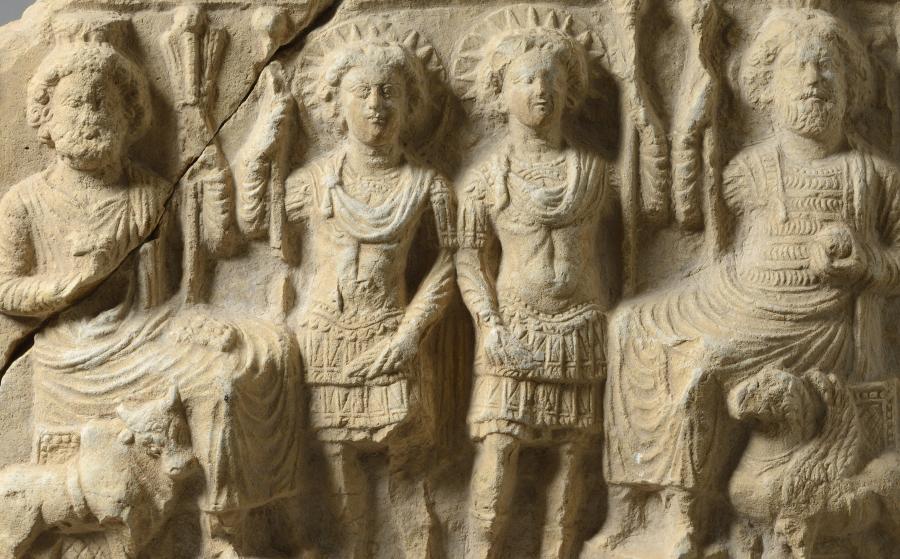Monument to the gods Bel, Baalshamin , Yarhibol and Aglibol
Information sur l’artiste
SYRIA, PALMYRA

Relief avec Bêl et Ba'alsâmin,Yarhibôl et 'Aglibôl, 121 ap. J.-C.
Image © Lyon MBA Photo Alain Basset
In Palmyra, in the year 121 A.D., Ba'alay dedicated this monument to four gods. Beneath the image of the divine group, the dedication in the Palmyrene language – a form of Aramaic – states, "These representations of Bel, Baalshamin, Yarhibol, and Aglibol were made by Ba'alay, son of Yedi'bel, son of Ba'alay, in the month of Tevet, in the year 432" (from the Seleucid era which began in 311 B.C.).
Palmyra, a flourishing caravan city in the Syrian desert, reached its zenith during this period. Its citizens had managed to adapt to Roman rule whilst preserving their own traditions. This syncretism is particularly noticeable in religion, where Babylonian and Aramaic gods took on a Greco-Roman appearance.
The supreme deities of the Palmyrene pantheon are seated at the edges: the great god Bel on the right, and Baalshamin , god of fertility, on the left. Standing between them are Yarhibol, the sun god, and Aglibol, the moon god. Although connected in worship, they are rarely portrayed together. Each of the gods is holding a sceptre and wearing either Grecian or military clothing. The principle of symmetry, which can be seen in the way the figures are depicted, the position of the sceptres, and the animals associated with the supreme deities (a griffon and a humpback bull, a symbol of fertility), bring movement to the composition of this bas-relief whose quality attests to the greatness of the Palmyrene sculptural tradition.
Syria, Palmyra
121 A.D.
Limestone
H. 45; L. 54; D. 9.5 cm
Purchased in 1992
Inv. 1992-13





